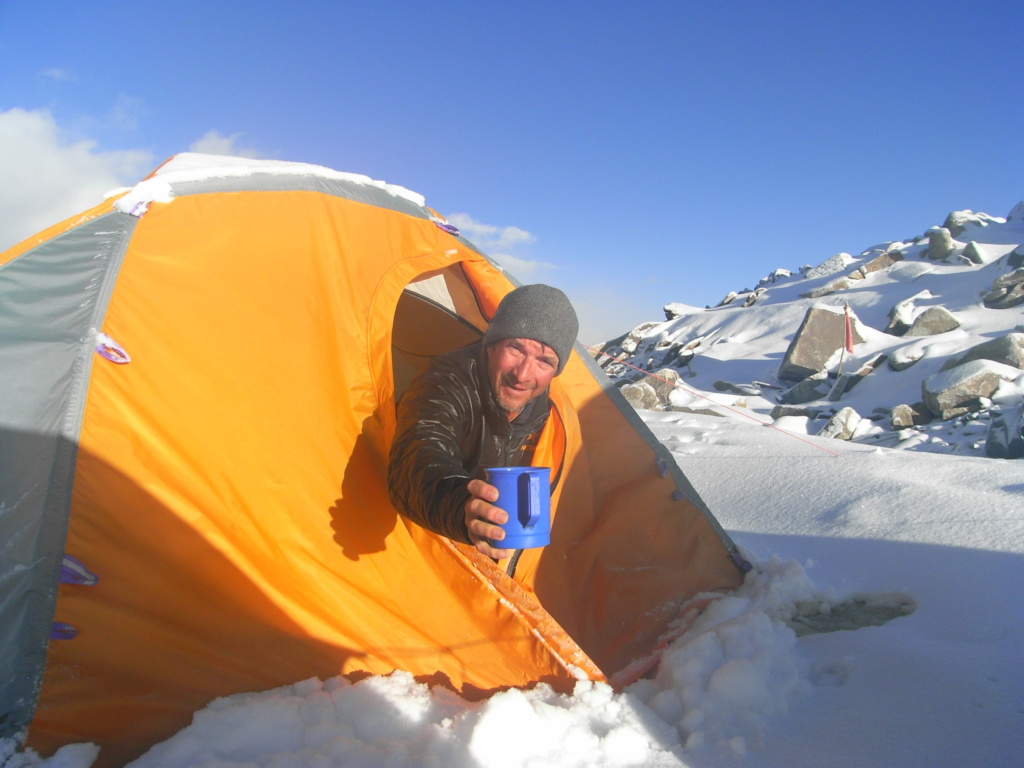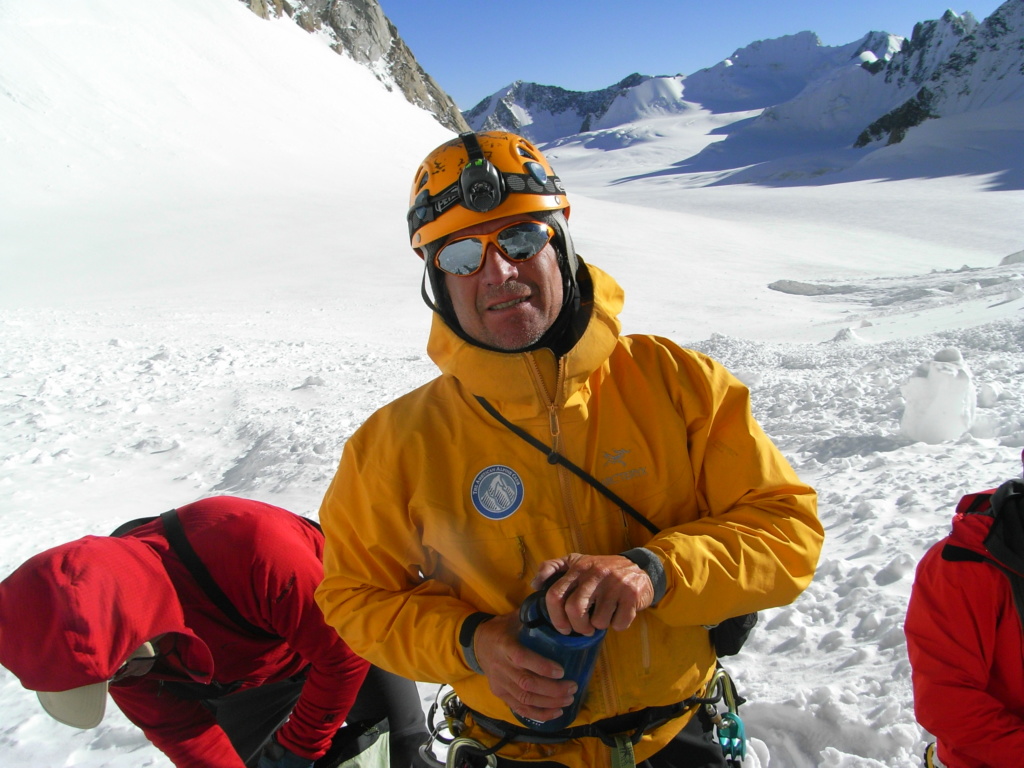American climber Steve Swenson recalls poignant moments during his various climbs in India and Pakistan

American mountaineer Steve Swenson recalls making his way through a volatile landscape
Like most American kids growing up in the space age of the early 1960s, Steve Swenson had dreams of becoming an astronaut. It didn’t take long for that bubble to pop: his father told him that he was unlikely to make it since he wore glasses.
Around the same time, Americans were trying to put the first climbers on the top of Mount Everest, eventually succeeding in 1963. Their exploits were splashed in newspapers, magazines and books, and just like that, Swenson’s destination changed from outer space to the heights of the high mountains. A journey, which started out while climbing an electric pole outside his home in Seattle, continues to take him to some of the most remote locations of the world.
Swenson climbed the second highest mountain in the world, K2, in 1990 and made a solo ascent of Everest, without supplementary oxygen, four years later. In 2012, he and his partners made the first ascent of Saser Kangri II (7,518 m).

Swenson, 65, was in Mumbai recently to attend The Himalayan Club’s annual seminar. He recalls: “From a decade leading up to the mid-1970s, the Karakoram was closed to outsiders. In the meantime, all the 8,000-ers had been summited and climbers were now chasing new routes up the same mountains. When Karakoram opened in 1974, there were a number of unclimbed mountains. It was like a candy store for mountaineers.”
The region that Swenson had chosen had its own complexities. The Karakoram range extends from Afghanistan in the west through Gilgit-Baltistan in Pakistan-occupied Kashmir to the eastern ranges that run through Ladakh and end at Aksai Chin. It is home to four of the fourteen 8,000 m mountains of the world, including K2. What caught Swenson’s attention, though, were the unclimbed 6,000 m and 7,000 m peaks but the volatile politics of the region left a lot of aspects of the journey to chance.
“The first time I went to Pakistan was in 1980. The big issue was Kashmir because of the conflict between India and Pakistan, and whether we would be allowed to go,” Swenson says. During a visit to Peshawar, Swenson recalls seeing “every kind of portable weapon, with maybe the exception of Stinger missiles and launchers, displayed for sale in the bazaar”.
From then on, every time he decided on a climbing project, he knew that understanding the situation in that country was as important as the route recce. The first challenge he took on was Gasherbrum IV, a mountain that he failed to climb even after four attempts. It took him a decade of constant learning and application to finally make it to his first summit in the Karakoram — an oxygen-less climb up K2 in 1990.
“Security became an issue after the Soviets left Afghanistan in 1989, and the Afghan Taliban took control. At the same time, insurgency was taking root in Kashmir, with the Inter-Services Intelligence driving their agenda through the mujahideen,” he says.
When Swenson went back to the region in 1999, the Kargil conflict was at its peak. In his book, Karakoram: Climbing Through the Kashmir Conflict, he recalls a poignant incident: “Our climbing team left Islamabad by road on June 21. As our bus headed up the Karakoram Highway toward Skardu, I watched busloads of bloody bandaged Pakistani soldiers fresh from the battlefield travelling in the opposite direction. I had never seen such a vivid display of the horrors of war. Witnessing these wounded young men, many of whom looked like they were teenagers, overwhelmed me. It seemed like another miscalculation by Pakistan’s Army on how India would respond, only to be defeated in short order by their stronger neighbour.”
Swenson recalls another conversation with a young Pakistani soldier. “He told me he was going to the front to become a martyr. They were probably encouraged to feel this way by their fathers and male religious instructors. I simply asked him if his mother would want him to be a martyr and he said, ‘Probably not.’ I told him to simply listen to his mother,” says Swenson.
It was after the 9/11 attacks in New York that Swenson had cause for concern while travelling to Pakistan. “When the US allied itself with the northern tribes and pushed the Taliban, many of them just crossed over the border into the tribal areas of Pakistan. That created political instability and violence to some degree. After 2007, some of these fundamentalist groups were really flexing their muscles and pushing the security forces around a bit,” he says.
His Shia Muslim mountaineering friends had their share of concerns when they travelled to the Pashtun Sunni-dominated areas, especially while traversing the Mazeno Ridge of Nanga Parbat in 2004. In the future, the expedition teams would stop taking the Karakoram Highway from Islamabad to Skardu to avoid any untoward incident.
After an unsuccessful attempt on the south-west face of Saser Kangri II in 2009, Swenson, Mark Richey and Freddie Wilkinson reached the summit two years later. It was the second highest unclimbed mountain, after Gangkhar Puensum, at the time and, for their efforts, they were awarded the Piolet d’Or, which is considered the Oscar of mountaineering.
In 2013, across the border, a ruthless attack took place at a high-altitude base camp of Nanga Parbat. Eleven expedition members were murdered by gunmen. After that, a high altitude unit from the Gilgit-Baltistan Police Department started accompanying expeditions to the mountains.
“The attack on the Army Public School in Peshawar in 2014 was the last straw. It outraged people and led to a crackdown. I have noticed a big difference ever since and after my last visit in 2017, I can say that it’s safe to climb there these days,” he says.
It’s been a decade since Swenson retired from his engineering job but, come summer, and there’s no stopping him from climbing in the Karakoram again.